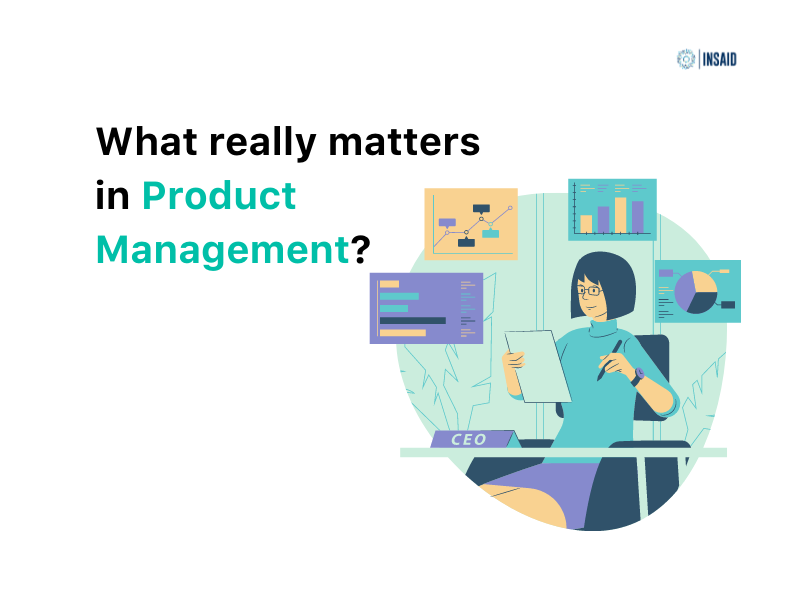All over the world, Product Management plays a key role inside companies driven by their products. It’s instrumental for organisational growth and strategic market advantages.
The expectation for this function is to boost innovation inside the company and, most often, the more immediate market the company operates in.
To innovate and make an impact in the market, Product Management has to be proficient at the highest strategic levels. This involves planning the lifecycle of existing products, conducting often complex customer research studies to get input directly from the market and then extracting insights that are meaningful and actionable.
While Product Management is arguably the most strategic arm of an organisation, it’s interesting to note that it often does not have a seat at the higher table. Typically, the highest product function stops with the VP of Product.
Life inside Product Management
Naturally, there will be sometimes significant differences in the way this team functions and scope of responsibilities. Many factors drive these differences, including company size, industry and nature of the product, company culture and how advanced processes and technologies are at the specific firm.
Yet, a strong common thread lies at the core of the Product Management function: unsurprisingly, it’s the product.
Here are the common product-related activities that make up the Product Management core:
- Following through with product opportunities within current markets
- Expanding into new markets
- Reaching new audiences with existing products
- Coming up with incremental improvements to products
- Creating brand new products that provide competitive advantage, or even introduce new product categories into the world
All this takes quite a bit of strategic knowledge and training.
On top of the raw strategy and analysis that essentially set the company on a specific path, Product Management sets requirements for Product Development and is the driving force to ensure the rest of the organisation is briefed on the market opportunity with a chance to contribute to the conversations and development.
For all this, a Product Manager must have subject matter expertise on its customers (pain, wants and needs), market segments, competitive products, features and specs, as well as working knowledge of how each of the other functional areas play into the product development process.
A Product Manager’s everyday

Product managers coordinate work done by many other departments (like software engineers, data scientists and product designers) and are ultimately responsible for the business success of the product.
Let’s break that down.
On the surface, it’s pretty simple. A Product Manager is often called the ‘CEO of Product’ implying full governance over the birth, life and death of their company’s produced goods. But that is not necessarily the case.
Many organisations will face either an absence of Product Management leadership at the executive level or a fierce power struggle for who should really be deciding what the company will develop next.
While other areas, such as Engineering, Industrial Design, Sales, Marketing and even Manufacturing, will all have strong opinions about what the company should develop, none can claim to be the true expert in knowing what customers really want. It’s not their primary role.
However, it absolutely is a focal responsibility for the Product Manager.
Product Manager vs. Product Line Manager vs. Product Portfolio Manager
Terminology can vary, depending on industry but especially company size. Inside large enterprises, there are likely teams of each title and even additional related roles. A Product Manager is often used interchangeably with Product Line Manager, especially inside smaller companies. However, there are distinct differences.
A Product Manager typically governs over one or more products that may or may not be related. In larger organisations, e.g., Ford Motor Company, Apple, Mattel, there are even more than one Product Manager per a single product.
At smaller manufacturers and other product-driven companies, a single Product Manager could indeed be responsible for the majority of the company’s products. While a Product Manager oversees one or more products that don’t have to be related, a Product Line Manager oversees multiple products that are related to one another.
And there are important differences between a Product Manager and a Product Portfolio Manager too.
Product Portfolio Managers are often viewed as the next career step for a Product Manager. They quarterback a group of Product Managers who are each responsible for individual products.
Product Portfolio Managers set the strategic direction for the portfolio as a whole ensuring that collectively, the products contribute to moving broader organisational objectives forward. Product Portfolio Managers are also responsible for expansion into new/adjacent markets.
What Product Managers care about
There are many factors that make professionals in these roles strive for on a daily basis, all of which show commitment to advancing the company’s vision and serving customers:
- Meeting or exceeding customer expectations
- Innovation that makes an impact
- Differentiated product
- Speed to market
- Setting the right strategy for growth
- Planning for the future
- Customer experience and retention
- Managing their existing product line
Vice President (VP) of Product Management
As mentioned above, some organisations won’t have a dedicated senior-level Product Management role. For those that do, it’s generally at the VP level.
This person spearheads the product management process for the entire organisation (enterprise brands may be different) and leads the product planning and development expectations from initial product ideation to the final product.
The VP of Product Management ensures that new or improved products meet customer needs first and foremost, as well as keeping an eye on the brand standards. As smaller organisations grow and the product team expands, it’s common to elevate the Product Manager with category expertise into the VP of Product role.
Whereas a Product Manager is responsible for collaborating with different functional areas to introduce the product into the market, it’s the job of the VP to make sure the whole company understands the vision for the product and its impact goals for the company, as well as the customers and marketplace.
Key functions of the Product VP are:
- Communicating
- Getting support for and reinforcing the strategic direction
A key takeaway: It matters less what the exact title of the position is. What’s key is how an individual role fits into the organisation and contributes to company growth and meeting customer needs. All of which should ultimately lead to advancement and creativity in the more immediate as well as the broader markets.
 Pin
PinIf you want to crack roles like Analytics Product Manager, PGP in Product Management & Data Science would prepare you for cracking roles like these. Explore this program here.






